Spatial and temporal changes in promoter activity of the astrocyte glutamate transporter GLT1 following traumatic spinal cord injury
- PMID: 21488085
- PMCID: PMC9162082
- DOI: 10.1002/jnr.22624
Spatial and temporal changes in promoter activity of the astrocyte glutamate transporter GLT1 following traumatic spinal cord injury
Abstract
After traumatic spinal cord injury (SCI), there is an opportunity for preserving function by attenuating secondary cell loss. Astrocytes play crucial roles in the adult CNS and are responsible for the vast majority of glutamate buffering, potentially preventing excitotoxic loss of neurons and oligodendrocytes. We examined spatial and temporal changes in gene expression of the major astrocyte glutamate transporter GLT1 following moderate thoracic contusion SCI using transgenic BAC-GLT1-eGFP promoter reporter mice. In dorsal column white matter, total intensity of GLT1-eGFP expression per region was significantly reduced following SCI at both lesion epicenter and at rostral and caudal areas where no tissue loss occurred. This regional decrease in GLT1 expression was due to significant loss of GLT1-eGFP(+) cells, partially accounted for by apoptosis of eGFP(+) /GFAP(+) astrocytes in both white and gray matter. There were also decreased numbers of GLT1-eGFP-expressing cells in multiple gray matter regions following injury; nevertheless, there was sustained or even increased regional GLT1-eGFP expression in gray matter as a result of up-regulation in astrocytes that continued to express GLT1-eGFP. Although there were increased numbers of GFAP(+) cells both at the lesion site and in surrounding intact spinal cord following SCI, the majority of proliferating Ki67(+) /GFAP(+) astrocytes did not express GLT1-eGFP. These findings demonstrate that spatial and temporal alterations in GLT1 expression observed after SCI result from both astrocyte death and gene expression changes in surviving astrocytes. Results also suggest that following SCI a significant portion of astrocytes lacks GLT1 expression, possibly compromising the important role of astrocytes in glutamate homeostasis.
Copyright © 2011 Wiley-Liss, Inc.
Figures
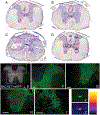

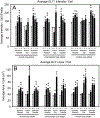
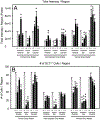
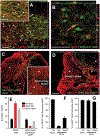
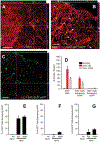

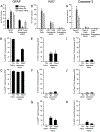
Similar articles
-
Reduction in expression of the astrocyte glutamate transporter, GLT1, worsens functional and histological outcomes following traumatic spinal cord injury.Glia. 2011 Dec;59(12):1996-2005. doi: 10.1002/glia.21241. Epub 2011 Aug 31. Glia. 2011. PMID: 21882244 Free PMC article.
-
Overexpression of the astrocyte glutamate transporter GLT1 exacerbates phrenic motor neuron degeneration, diaphragm compromise, and forelimb motor dysfunction following cervical contusion spinal cord injury.J Neurosci. 2014 May 28;34(22):7622-38. doi: 10.1523/JNEUROSCI.4690-13.2014. J Neurosci. 2014. PMID: 24872566 Free PMC article.
-
Transplantation of glial progenitors that overexpress glutamate transporter GLT1 preserves diaphragm function following cervical SCI.Mol Ther. 2015 Mar;23(3):533-48. doi: 10.1038/mt.2014.236. Epub 2014 Dec 10. Mol Ther. 2015. PMID: 25492561 Free PMC article.
-
Aquaporins in spinal cord injury: the janus face of aquaporin 4.Neuroscience. 2010 Jul 28;168(4):1019-35. doi: 10.1016/j.neuroscience.2010.01.037. Epub 2010 Jan 28. Neuroscience. 2010. PMID: 20109536 Free PMC article. Review.
-
[Progress in investigating astrocyte heterogeneity after spinal cord injury based on single-cell sequencing technology].Zhongguo Gu Shang. 2025 May 25;38(5):544-8. doi: 10.12200/j.issn.1003-0034.20240352. Zhongguo Gu Shang. 2025. PMID: 40461119 Review. Chinese.
Cited by
-
GLT1 overexpression reverses established neuropathic pain-related behavior and attenuates chronic dorsal horn neuron activation following cervical spinal cord injury.Glia. 2016 Mar;64(3):396-406. doi: 10.1002/glia.22936. Epub 2015 Oct 23. Glia. 2016. PMID: 26496514 Free PMC article.
-
Human neural progenitors derived from integration-free iPSCs for SCI therapy.Stem Cell Res. 2017 Mar;19:55-64. doi: 10.1016/j.scr.2017.01.004. Epub 2017 Jan 5. Stem Cell Res. 2017. PMID: 28073086 Free PMC article.
-
Frizzled 1 and Wnt1 as new potential therapeutic targets in the traumatically injured spinal cord.Cell Mol Life Sci. 2020 Nov;77(22):4631-4662. doi: 10.1007/s00018-019-03427-4. Epub 2020 Jan 3. Cell Mol Life Sci. 2020. PMID: 31900623 Free PMC article.
-
Reduction in expression of the astrocyte glutamate transporter, GLT1, worsens functional and histological outcomes following traumatic spinal cord injury.Glia. 2011 Dec;59(12):1996-2005. doi: 10.1002/glia.21241. Epub 2011 Aug 31. Glia. 2011. PMID: 21882244 Free PMC article.
-
Human iPS cell-derived astrocyte transplants preserve respiratory function after spinal cord injury.Exp Neurol. 2015 Sep;271:479-92. doi: 10.1016/j.expneurol.2015.07.020. Epub 2015 Jul 26. Exp Neurol. 2015. PMID: 26216662 Free PMC article.
References
-
- Baptiste DC, Fehlings MG. 2006. Pharmacological approaches to repair the injured spinal cord. J Neurotrauma 23:318–334. - PubMed
-
- Basso DM, Fisher LC, Anderson AJ, Jakeman LB, McTigue DM, Popovich PG. 2006. Basso Mouse Scale for locomotion detects differences in recovery after spinal cord injury in five common mouse strains. J Neurotrauma 23:635–659. - PubMed
-
- Cao H, Zhang YQ. 2008. Spinal glial activation contributes to pathological pain states. Neurosci Biobehav Rev 32:972–983. - PubMed
-
- Danbolt NC. 2001. Glutamate uptake. Prog Neurobiol 65:1–105. - PubMed
Publication types
MeSH terms
Substances
Grants and funding
LinkOut - more resources
Full Text Sources
Medical
Miscellaneous

